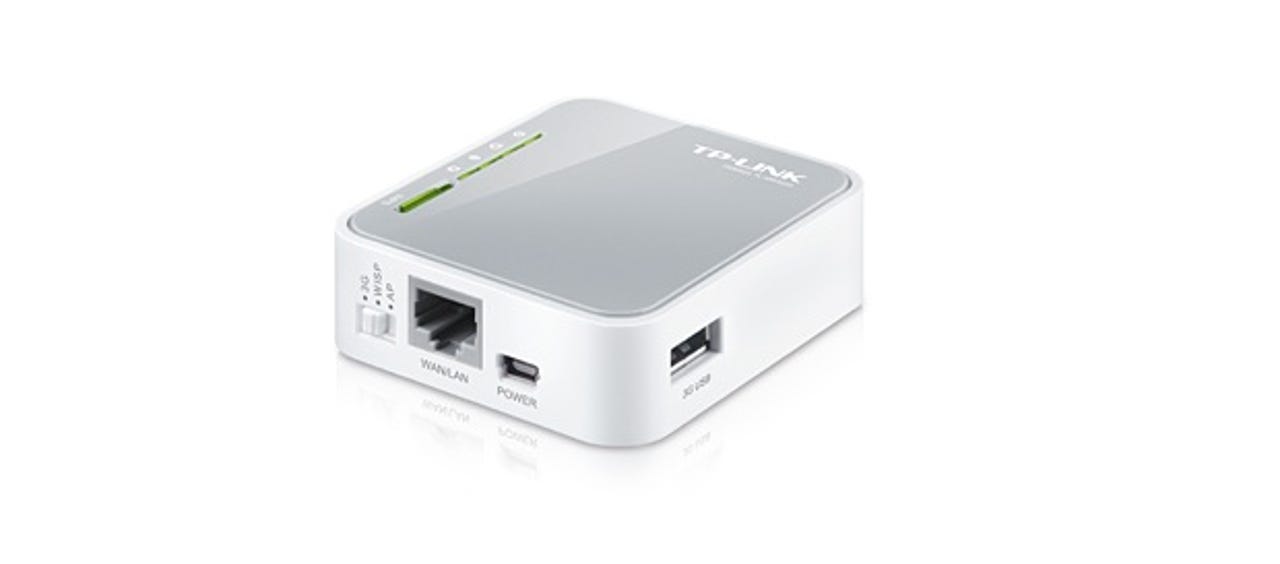TP-Link TL-MR3020 portable 3G hotspot

Using Wi-Fi hotspots for web access when you're out and about can be immensely frustrating, especially if you want to connect several devices. Although there are software hotspots available for Windows 7, and iPhone and Android devices have a portable hotspot feature, a dedicated hardware hotspot such as TP-Link's recently-announced TL-MR3020 still has some attractions, not least of which is configurability.
It's a small white box, measuring 74mm by 67mm by 22mm, and is powered via a short USB to mini-USB cable that connects to either the supplied power adapter, or to a PC or notebook's USB port. It doesn't have a SIM card slot, but requires a USB 3G dongle (not supplied). In addition to those supported in the firmware, there's a list of 25 models for which downloadable configuration files are available. We tried it successfully out of the box with a Huawei E160G and a ZTE MF627 on the Three network.

On an adjacent side is a WAN/LAN Fast Ethernet port and a three-way Mode switch that allows the TL-MR3020 to be used as a 3G hotspot, wireless access point, or as a wireless ISP (WISP) router. This latter mode is handy for connecting to a public Wi-Fi hotspot and sharing it with other Wi-Fi devices, saving you having to connect each one individually. Client devices can also connect via the LAN port, and this port also doubles as a WAN port for connection to a cable modem (it supports dynamic or static IP or PPPoE connections). It's a single-stream 802.11n device, and so supports links speeds up to 150Mbps.
There's plenty of control over configuration via the web administration interface, including AP isolation (to prevent communication between connected devices), WDS bridging, incoming and outgoing bandwidth control and MAC-based web filtering/parental controls. You can also disable the Mode switch to prevent accidental changes.
For frequent travellers needing a very flexible pocket-sized hotspot, router and access point, it certainly has plenty going for it. It costs £39.99 (inc. VAT) and a list of suppliers can be found on the TP-Link website.
Kelvyn Taylor